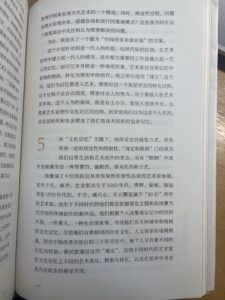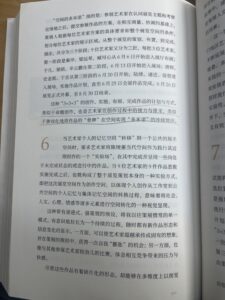My fieldwork in Glasgow in week 7 allowed me to re-examine the interrelationships between art, history, and archival practice in a new light (Igwe, 2019). In particular, at ‘The Trembling Museum’, Dominic Paterson and Andrew Mills demonstrated how nonnormative time is represented in archival practice. This breaks through the confines of linear narratives to show the layering and interweaving of time, forcing us to reconsider the ways in which historical events are presented and how they interact with the reality of the viewer’s life (McMahon, 2023). At the same time, Igwe’s reconstruction of historical narratives through film archives highlights the potential of archives in documenting and reflecting on the histories of marginalised groups (Igwe, 2019), offering a fresh approach to archival interpretation.
The CCA Glasgow visit further deepened this understanding as Rae-Yen Song pushed the boundaries of life and death narratives, further confirming the value of archives as a dynamic resource that can inspire new understandings of life, death, and memory (Song, 2022). At the final stop, Glasgow Women’s Library, the experience of feminist archival practice emphasized the role of archives not only as recorders of history but also as catalysts to inspire social change and promote gender equality in the future (Gaudsen, 2022).
I therefore reflect on how curatorial practice can more creatively utilise archives to activate non-normative time to provide a more interactive and pluralistic view of history. In An Archival Impulse, Hal Foster discusses how modern artists have transformed the archive into an active medium for re-examining the past and the future by excavating the historical omissions and cracks in the archive (Foster, 2004). This echoes Jacques Derrida’s insight in Archive Fever: A Freudian Impression that the interpretation and construction of the archive is an act of power that influences the formation of memory and history (Derrida, 1995). Combining Foster’s artistic perspective with Derrida’s philosophical analysis, I have come to understand that archives are not only records but also key tools for shaping historical perspectives, memories, and identities, reflecting the past while engaging in current cultural dialogues and the construction of future histories (Stearn, 2022).
The peer-to-peer advice given to all members by tutor Adam in this week’s seminar not only applies to individual student projects but also sheds light on my curatorial project. The seminar emphasized on the principles of layout, visualization, and overall design; it also touched on the organization and archiving of archival materials; and the selection of socially significant artworks. Feedback on my project focused on the dialogue between tradition and modernity, and I was advised to explore modern curatorial approaches by looking at multiple media, virtual exhibition platforms, and social media promotion. The focus was also on curatorial practice and textile technology. I gained new insights into traditional and contemporary curatorial practices after reading the recommended book Old Mistresses (Parker, R. & Pollock, G., 1981). By incorporating curatorial feeding into curatorial practice, it is possible to communicate more effectively with audiences from different backgrounds and present blueprints as a powerful form of cultural expression through richer forms of content and exhibition strategies (Williams, 2021).
Progress on group projects
After an offline group workshop, Ningyue shared Feng boyi’s books on writing domino plans (Figures 1) to use as our inspiration. My personal research revealed that all the works in his curatorial project would be in an unfinished state, where people and works, environment and works, and people and environment are all influencing each other, and everyone is both a participant and a judge of the works, being outside of it and difficult to escape from it (Art China, 2009). After discussion, our group plans to incorporate the content of the book, with proper citation, into the group project Forehead.
‘Is there a brand new curatorial approach that makes full use of both social and physical space to showcase a facet of contemporary art, while transcending conventional methods and itself by presenting the processes, questions, and indications?’




Boyi Feng, 2009
References:
Derrida, J. (1995). ‘Archive Fever: A Freudian Impression.’ Diacritics, 25(2), 9-63.
Foster, H. (2004). ‘An Archival Impulse.’ October, 110, 3-22.
Gadsden, C. (2022). Glasgow Women’s Library: A Feminist Archive Practice. Glasgow Women’s Library.
Igwe, O. (2019). ‘The names have changed, including my own and truths have been altered.’ [Film] London.
McMahon, L. (2023). ‘Disordering archives: Onyeka Igwe and Black feminist speculative histories.’ Screen, 64(4), 377-400.
Song, R.-Y. (2022). Life-bestowing cadaverous soot. CCA Glasgow.
Stearn, E. (2022). ‘Feel My Love.’ Lothian Health Services Archive.
Art China. (2009). ‘The Domino Project in Space: The Domino Effect on Memory. China Art Network. [Online] Available at: http://art.china.cn/huihua/2009-06/17/content_2966895.htm



hi!!!!!!!!!11